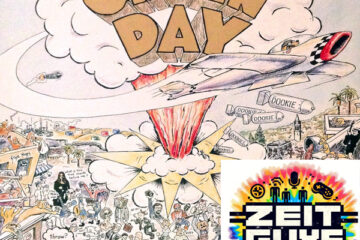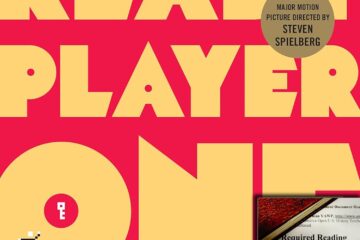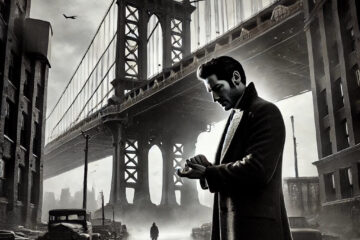The Arlington National Cemetery
The Arlington National Cemetery exists as one of the two national cemeteries operated by the American army. It holds almost 400,000 graves with the addition of the “Tomb of the Unknown Soldier.” In Washington D.C. I got to witness many different museums, government buildings, and historical exhibits, but one of my favorite experiences was the walk through The Arlington National Cemetery. I got the chance to take a tour of it in Arlington, Virginia, and I got to witness many surreal portions of the cemetery with my classmates.
For starters, when we approached the entrance to the main building, I could see the distant white headstones. What struck me the most was the immense size of the cemetery and how the ground was covered with headstones. It seemed as if it went on forever. As we began our tour, we walked to the side of the rows of headstones. What I noticed was each individual headstone had a wreath with a red ribbon attached to it. It showed me just how much each individual life mattered and was cherished. Above these headstones stood the Arlington House. The house stands as the Robert E. Lee house. It was initially home to the Washington family, but as Robert E. Lee married into the Washington family, it became a memorial to him. The house was great in size, and a flag stood right in front of it. The building had a quite prim and proper look with its columns, and I immediately noticed its similarities with the White House.
After walking through the cemetery some more, we made a stop at the “The Tomb of the Unknown Soldier.” The tomb honors the soldiers whose remains were unidentified from all wars, but there are only bodies from the Spanish-American war, World War I and II, and the Korean War. The tomb is always guarded by different soldiers from the 3rd U.S. Infantry Regiment. They walk back and forth in front of the tomb in a proper manner. What surprised me the most was how the soldiers had little to no emotion as they walked back and forth. As the weather was near freezing, the soldiers walked with no expression of the cold. This caused me to take into account just how much they care for these unknown soldiers. They would walk through this dreadful cold because they care so much about all those who deserve their recognition. However, these guards do rotate during their shifts. We were lucky enough to get there just in time for the guard change. The change between the guards was remarkably in sync and elegant. The guards would at the same time clack their boats to the ground and walk back and forth. Once again, this routine proved to me just how much the tomb mattered to the soldiers and the rest of the U.S. Army.
To conclude, The Arlington National Cemetery was one of the most interesting experiences that I had while in D.C. with my class. I was able to learn more about the history of the wars and the way the cemetery came to be. I was able to notice all the detail of the graves to the infrastructure. Overall, walking through the cemetery was a great way to take into account just how many lives were lost through war and to learn more about the history of America in an interactive way.
My D.C. Experience by Grace Novascone
This past weekend, I went on a trip with my Amex Class to Washington, D.C., the most historically rich city in America. I lived in Washington, D.C., until I was almost eleven, but I have not been back since. When I lived here, I lived four blocks from the capitol and went on many field trips with my school and saw every museum and attraction, but my tiny, incomplete brain couldn’t comprehend and fully understand the importance. I remembered the metro, Lucky Strike Bowling Alley (where I had my birthday parties), and the best place to get a milkshake Good Stuff Eatery, but I did not remember or really understand the important stuff. Last weekend was such a fantastic experience as I am older and can understand this history. Out of the ten years I lived in D.C., I don’t think I fully understood this city and its meaning until this trip. I understood more in two days than in 10 years. This unique trip was so fun and definitely memorable, to say the least. We visited many different museums and saw many sights like the Smithsonian Museum, the White House, the Monument, the Arlington Cemetery, and more. But out of all the attractions and places we went and saw, one spoke to me differently: the National Museum of African American History and Culture. To say I was amazed would be an understatement of how extraordinary this museum was.
Established by an Act of Congress in 2003, the nearly 400,000-square-foot museum is located very close to the Washington Monument. It is a massive collaboration of decades of efforts to highlight the contributions of African Americans. On a late summer day in 1963, 200,000 Americans gathered around the Washington Monument to hear Martin Luther King and his “Dream.” This monumental moment in history changed America, and this museum, just yards from the Monument, is fully visible to see and remember these efforts by extraordinary people.
We went downstairs first to an exhibit called the David M. Rubenstein History gallery. Then, we went down another elevator and “down centuries back in time.” I liked how the exhibits were in chronological order of this history because that made it easy to follow and understand. There were three main galleries of this museum: Slavery, Segregation/Reaching Freedom, and Changing America. To get to the next gallery, you would go upstairs to the next level. I thought this was a brilliant idea when moving from one time period to the next.
The museum first starts with slavery and freedom.
Five hundred years ago, a new idea transformed Africa, Europe, and the Americas. For the first time, people saw other people as things and a way to make money – not as human beings. This section captures the journey of millions of Africans captured and forced across the Atlantic, many separated from their families, and then slowly moves through the decades and explores equality movements. I remember at the beginning of this museum, I saw a whip in a glass case that was used to beat slaves. It broke my heart to look at a physical object meant to hurt human beings like that. One of the main parts of this section was the Middle Passage, and there were smaller quotes and stories from enslaved people during this time. While I was reading stories from people during this time, it connected to me because so many people were taken like me – daughters, sisters, and friends, that got taken away from their families. As I moved on, I saw the illegal law of slave marriage. It hurt to see how something everyone dreams of and plans is having a husband, kids, and a house to settle down in was impossible for slaves during this time. However, slaves adapted and even though they couldn’t “legally” marry they wore an expandable ring where they were informally married by Rev Glennie in South Carolina. After leaving this section, you are approached by a massive wall with a line from the Declaration on it “All Men are Created Equal.” However, when I saw this quote, even though it was written in law, it was not enforced and necessarily true due to the mistreatment of African Americans back then – they couldn’t marry like whites could. The main creator of this document, Thomas Jefferson, was shown in a lifesize statue, along with 609 of his slaves he had. It was really heartbreaking seeing all the names on the wall.
The next exhibit I saw was about Reconstruction and how the nation struggled to recognize African Americans as equals despite legal documents like the Declaration of Independence. As I went up the steps to the next section, I was fascinated with the lifesize interactive railroad car showing inequality. It showed how the white people sat in the front with a big bathroom and lots of luggage space while the “colored section” was in the back, cramped with no luggage space and much smaller bathrooms. Another part of this section that really affected me was the “Stereotype” section. This showed how African Americans were used in dehumanizing, racist images, objects, and household figurines to justify the mistreatment of African Americans. These depictions made African Americans seen as lazy, scary, unhuman, and dumb. It shocked and disgusted me seeing African Americans being used as a salt and pepper shaker. I was also amazed at the unfair ruling of African Americans in court, specifically the Mack Ingram Trial, where an African American male was found “guilty of assault” for looking at a young white woman from seventy-five feet away from his car and was sentenced to two years hard labor and five years of probation. When reading this I could not believe it was real and it made my stomach twist.
As the other two exhibits had a darker feel and darker lightening, the next exhibit I went to, which covered 1968-present, had a much more hopeful, bright feel. 1968 was a turning point in the African American movement. It was filled with African American leaders like Barack Obama and Oprah Winfrey. Messages of equality that were spread were shown through paintings, graffiti, newspapers, and other media. Suspended from the ceiling on the right, there is a huge plane that was used to train Tuskegee Airmen, the African American military pilots who fought for their segregated country in World War 11. Something that touched me a little bit further down in big letters was the quote from Langston Hughes saying, “I, too, am American.” This, to me, was the whole message of this exhibit – that the color of your skin does not define if you are “American.”
David Rubeinstein, the moderator of this whole exhibit, said, “This exhibition is really about making sure that people realize that we don’t have these rights automatically. We have to fight to get them, and once we get them, we have to preserve them.” I think this quote explains what this whole museum is about and for. It is about remembering and honoring those who fought and died for freedom, and in the end, shows how we are all American. After leaving this museum, I truly felt inspired and touched.
Below are some pictures I took:


